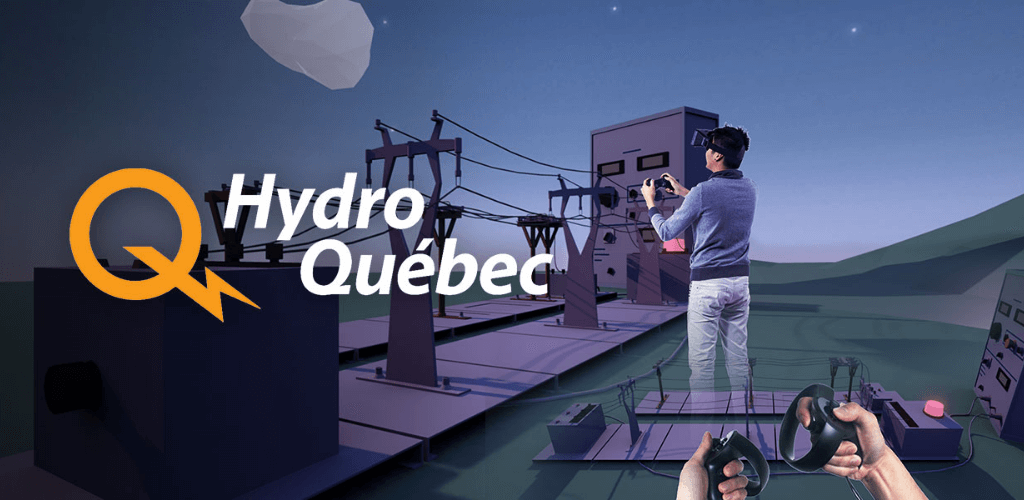Making the Invisible Visible

How ellicom and Hydro-Québec Created a Safe Virtual Reality Training Program about the Danger of Induction in Power Lines
Electromagnetic induction poses a critical health danger to workers that need to work close to power lines. It is invisible, has no odour and no colour. For workers, it is an especially complex phenomenon to understand since it occurs on power lines that do not have any electricity running through them. But the danger is real. In fact, unsuspecting workers performing repair work on an off-voltage line could suffer serious injuries or even die because of the electricity that has accumulated in the power line.
To ensure the safety of its workers, Hydro-Québec was using fragile physical models to demonstrate electromagnetic induction-related phenomena, helping workers learn about the many risks of electrocution. Although the models were appreciated by the learners, since they helped make theoretical aspects much more concrete, there were many drawbacks in using these models. First, they were of considerable size and heavy, the assembly and disassembly were time-consuming, repair was difficult and costly, and most of all, these models carried electrical charges in their wires, and accidents occurred during the training, making handling of the model by learners and trainers dangerous and risky.
ellicom found the perfect solution to address this problem through a safe and interactive approach that fosters critical thinking and facilitates content retention. Together with Hydro-Québec, ellicom developed a virtual reality demonstration using StellarX, an immersive virtual and augmented reality platform created by OVA, a trusted partner in all of the VR/AR projects, allowing the learners to see the danger with their own eyes and feel with their own hands the result of induction, while being immersed in a realistic work environment consisting of a power line being repaired.
During the demonstration, the trainer demonstrates each factor that affects induction on the power line (distance to other power lines, strength of the wind) one by one. A meter also displays the induction level. The trainer can also ask the participant to touch the power line if he or she feels that the situation is safe. If the situation is not safe, an electric discharge is simulated, shaking the VR controllers in the participant’s hands, thus eliciting a very strong reaction from participants. Training becomes much more impactful and memorable, ensuring that the learner’s brain is triggered by their experience in the VR environment.
The benefits of having this new innovative approach are numerous. As this VR immersive learning experience is now incorporated into training sessions for Hydro-Québec workers having to deal with induction, learners gain more experience prior to conducting the actual work, thus reducing the number of accidents dramatically. This also considerably reduced the cost of training and allows learners to live a more felt experience of the phenomenon of induction. The best part of this program is surely its safety feature, as there is no risk of electrification and learners can manipulate the virtual model in ways that would otherwise be impossible with the physical model.
Ellicom, Hydro-Québec and OVA were greatly rewarded for the efforts that were put into this amazing project, receiving the highest distinction in the 2018 Brandon Hall Group Excellence in Technology Awards for Best Advance in Gaming or Simulation Technology and being a finalist for an OCTAS award in the Government Department and Crown Corporation category —a distinction that shows that being bold and fearless in the way we approach training can create amazing results and provide tremendous benefits.